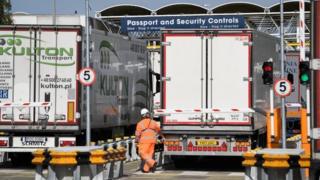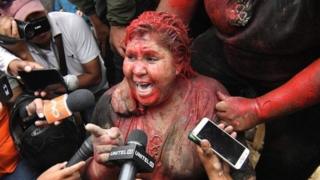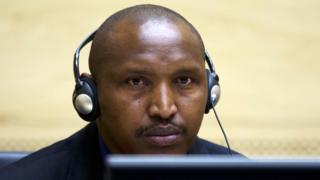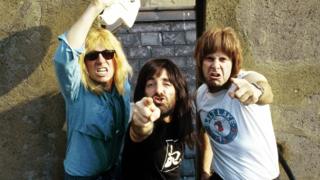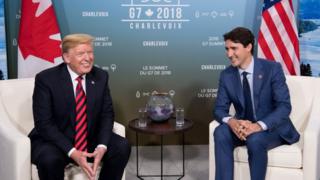 Image copyright
Image copyright
SAUL LOEB/AFP/Getty Images
Canada – it’s like the US, only different.
It’s colder; they play ice hockey more (even if their teams can’t seem to win the Stanley Cup anymore); their bacon is really ham; and their obsession with maple syrup products borders on unhealthy.
Oh, and they also go about governing and running for public office very differently than the US.
As the American presidential campaign season grinds into its 10th month, the Canadian general election, which started just last month, is nearing its conclusion.
Before it’s over, take a moment to contemplate what US presidential election would look like if it were a bit more, well, Canadian.
1. Swing states might be a thing of the past
Let’s start with the obvious structural differences between the US and Canadian systems of government. The US has an executive branch headed by an elected president that often faces off against a legislative branch that – like now – is at least partially controlled by the opposition party.
Canada operates under a parliamentary system, with a prime minister selected by the majority party.
Divided government? It’s not a thing up north.
Image copyright
Mark Horton/Getty Images
So, what if the Americans were to scrap their constitution and go Canadian (or British, or Australian, or Japanese … take your pick)?
First of all, US elections would look a lot more like the 2018 mid-term congressional contests than the 2016 presidential race. With the US Electoral College system relegated to the dustbin, key “swing states” would be a thing of the past, replaced by a focus on battles in individual congressional districts (or “ridings”, as the Canadians call them – a term whose etymology, sadly, doesn’t involve horses or Mounties).
Judging from those recently concluded midterms, US political wags would be focusing on suburbanites in urban areas as the key demographic, while those white working-class voters in the mid-west would lose some of their political lustre.
Oh, and one more thing about the parliamentary system.
The leaders of the parties in the legislature are the ones in line for the top job. So instead of Donald Trump versus Joe Biden (or Elizabeth Warren or Bernie Sanders), you could get Democrat Nancy Pelosi against Republican Kevin McCarthy.
While a conservative populist outsider like Mr Trump might be able to find a foothold in Canadian-style politics – one need look no farther than the successes of Rob and Doug Ford in Ontario – diving headfirst into the deep end of the electoral pool would be much more difficult in the Canadian system.
That’s either a feature or a flaw, depending on how you look at it.
2. There could be breakaway parties on left and right
There’s another quirk of the Canadian system that could translate into fun (or chaos) if it were magically installed in the US.
With parliamentary elections, it is easier for smaller parties to gain traction. There are currently five established political parties with varying levels of influence in the Great North: Liberals, Conservatives, New Democrats, Bloc Quebecois and the Greens.
Image copyright
GEOFF ROBINS/AFP/Getty Images
Canada has five established political parties at the federal level
The American equivalent of the New Democrats is probably the Bernie Sanders/Elizabeth Warren wing of the Democratic Party – so it’s not too difficult to imagine the US left fracturing under a Canadian set-up.
The same could happen on the right, of course, with Trumpists breaking off from the corporate/free-trader and small-government true believers of the Republican Party (instead of, you know, just burying them with insults and beating them in the primaries box). In fact, this could be unfolding right now in Canada, after the 2018 founding of the Canadian People’s Party – a group of self-styled conservative populists that is running parliamentary candidates across Canada this year.
And while a Quebec-style separatist movement doesn’t exist in the US, is it impossible to envision Californians (or New Englanders or Texans) getting so fed up with Washington politics that they strike out on their own?
Image copyright
Lucas Oleniuk/Toronto Star via Getty Images
Prime Minister Justin Trudeau on the election trail
Back in 2015, then-candidate Justin Trudeau promised to enact electoral reform – which some hoped would include switching the Canadian parliament to proportional representation. He ended up proposing a ranked-choice voting set-up, but then abandoned the idea once in the prime minister’s office. Either change would have done even more to give smaller parties a crack at representation in the legislature, as it does in many European countries.
Maine is the only US state to try ranked choice – and in 2018 it resulted in a congressional seat switching from Republican to Democrat. A proportional representation system would really shake things up, though.
Sadly, that hypothetical will have to wait for the yet-to-be-scheduled “what if the US were run like Belgium” feature.
3. It would be all over in six weeks
OK, let’s get to the good stuff. US presidential hopefuls began launching their campaigns in early 2019 – nearly two years before the November 2020 election day and a full year before the first ballots are cast in the primary process to selected the major party nominees.
In just about the time between the third and fourth (of 12!) Democratic primary debates, Canada will conduct their entire general election campaign.
Image copyright
ROBYN BECK/AFP/Getty Images
Joe Biden and Elizabeth Warren at the September Democratic debate in Houston
Pause, for a moment, to imagine such a scenario in the US. It’s October 2019. Americans wouldn’t have to think about campaigns, debates, candidate television adverts, non-stop cable news coverage and a seemingly endless stream of horserace for another year.
Sure, Canada has leadership races that determine the heads of the various parties and, well, politics is never totally out of mind. And as we’ve seen with the Trudeau blackface scandal, even a short campaign has plenty of time to devolve into very American kinds of political scandal.
With legal limits on the length of the campaign, however, elective politics could be kept mostly out of sight for vast stretches of time.
4. There would be a LOT less money involved
Time is money, as the saying goes. You know what else is money? Money.
Both the US and Canada have limits on the amount of money that can be donated to political candidates and parties. Only in Canada, however, are there hard limits on the amounts that candidates and parties can spend.
The US tried to impose such restrictions in the post-Watergate reforms of the 1970s, but the US Supreme Court has repeatedly held that “money is essential to disseminating speech” – and therefore spending restrictions infringe on constitutional protections.
The US has tried to impose “voluntary” limits on presidential spending, offering federal matching funds to those who abide by the caps. Ever since Barack Obama in 2008, however, presidential candidates have decided it’s more lucrative to go it alone.
What that means is that US elections are expensive, and US presidential elections are very, very, very expensive.
In 2016, Hillary Clinton and her affiliated campaign committees spent $1.18 billion – yes, billion – on her failed presidential bid. Mr Trump spent a (relatively) modest $616.5m.
Compare that to Canada’s 2015 general election, where all the parties could spend a maximum of $296m (Canadian) combined. They didn’t even come close to hitting that mark, however, shelling out just $72.6m.
Image copyright
Bernard Weil/Getty Images
Election day in Canada, 2015
Even on a per-capita basis, Canadian spending on their general election ($2 per person) is much less than the US ($5.6) – and that’s just US presidential campaign spending, which doesn’t include $4bn spent on congressional races in 2016 as well as the money spent by losing presidential primary candidates.
In the US, politics is big business – for candidates, campaign consultants, media outlets and all the other industries that fuel the massive enterprises. And business is good. Change the Constitution, throw some hard spending limits on US candidates and parties, and watch the whole thing go from boom to bust in short order.
5. Perhaps we’d have no clear winner
So perhaps you’re an American who’s thinking: “Shorter, less expensive campaigns. Greater choice in political parties. An end to the Electoral College, which can award the presidency to candidates who receive fewer votes than their opponents. Where do I sign up?”
Before you jump on board the Canada express, however, you might want to know that the Canadian system isn’t necessarily a safe haven from electoral chaos.
It’s a not-too-remote possibility that this upcoming Canadian election, or a future one, could result in no party winning a majority. If the party with the most seats can’t form a successful coalition government (and they usually can’t), they end up trying to rule in the minority – holding onto power on a vote-by-vote basis, making whatever concessions they need to hold onto power.
If you thought American democracy has been a bit shaky of late, imagine a President Elizabeth Warren who is just one congressional vote away from getting knocked out of power, prompting another election not too long after the last one.
One need only cast an eye at Israel’s recent electoral upheaval to understand what that might look like.
Image copyright
LUDOVIC MARIN/Getty Images
Winston Churchill once quipped that “democracy is the worst form of government except for all those other forms that have been tried from time to time”.
Perhaps Canadians and Americans can start a mini-debate about which one of their democratic systems is the least bad.
More from Anthony on the candidates




